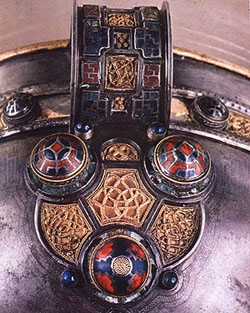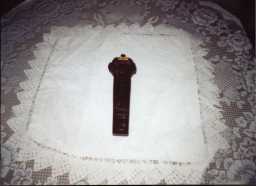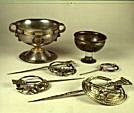|
The Ardagh Chalice came to light in
1868, by a worker digging for potatoes in a field. He came across a
metal object and he decided to
find out what the object was. He discovered a brooch , a cross, and
a beautiful cup. It was the Ardagh Chalice.
The Ardagh Chalice is considered to
be the finest example of Celtic art to be found. It has two handles,
one on either side. The colours of the chalice are made up of gold,
silver , bronze, brass, copper
and lead. It is made up of 354 pieces, including twenty rivets. There
is a beautiful band running on the outside of the chalice, and it is
engraved with the names of the twelve Apostles. It is one of the most
valuable chalices to be found and it is now property of the National
Museum in Ireland. "An Post" issued £1 stamps
with a picture of the chalice to various cities and towns, including
Ardagh.
The Cross
h The most elaborate and earliest of the
Ardagh brooches is of late 8th or early 9th century.It is of gilt silver,
the front of the brooch is designed with cast interlace ornament and
glass studs.The front is also decorated with three raised birds. The
"Thistle'Brooch", again dating back to the 10th century,
is so-called because of the pinhead and terminals, which resemble thistles.
|




 The
Large Ardagh Brooch
The
Large Ardagh Brooch